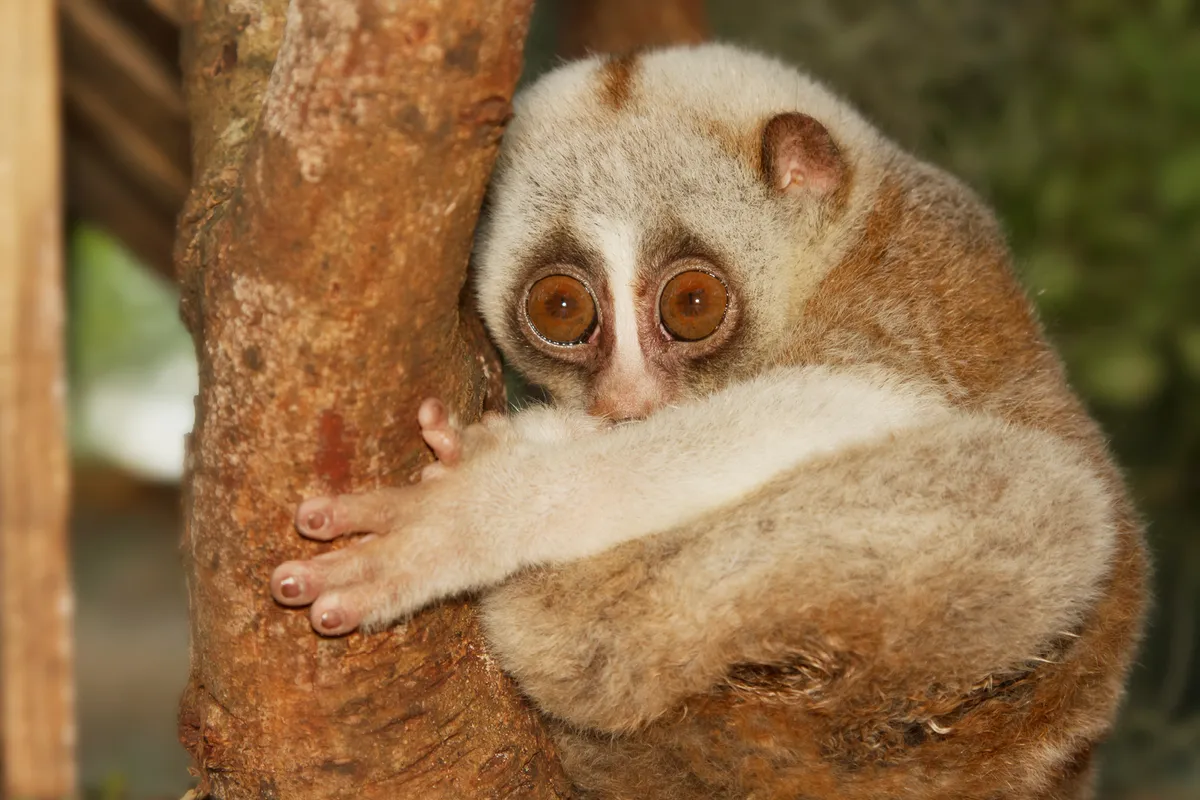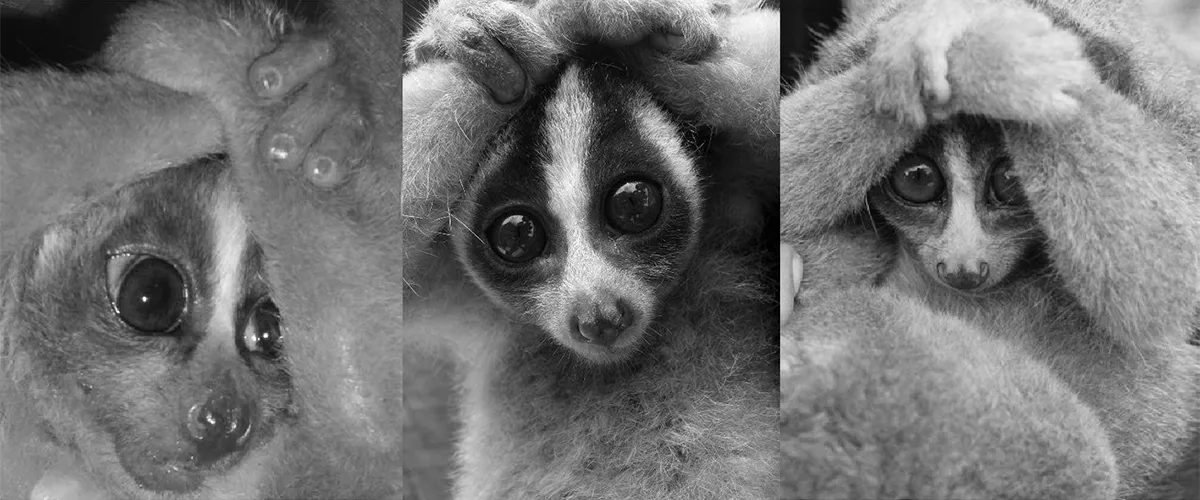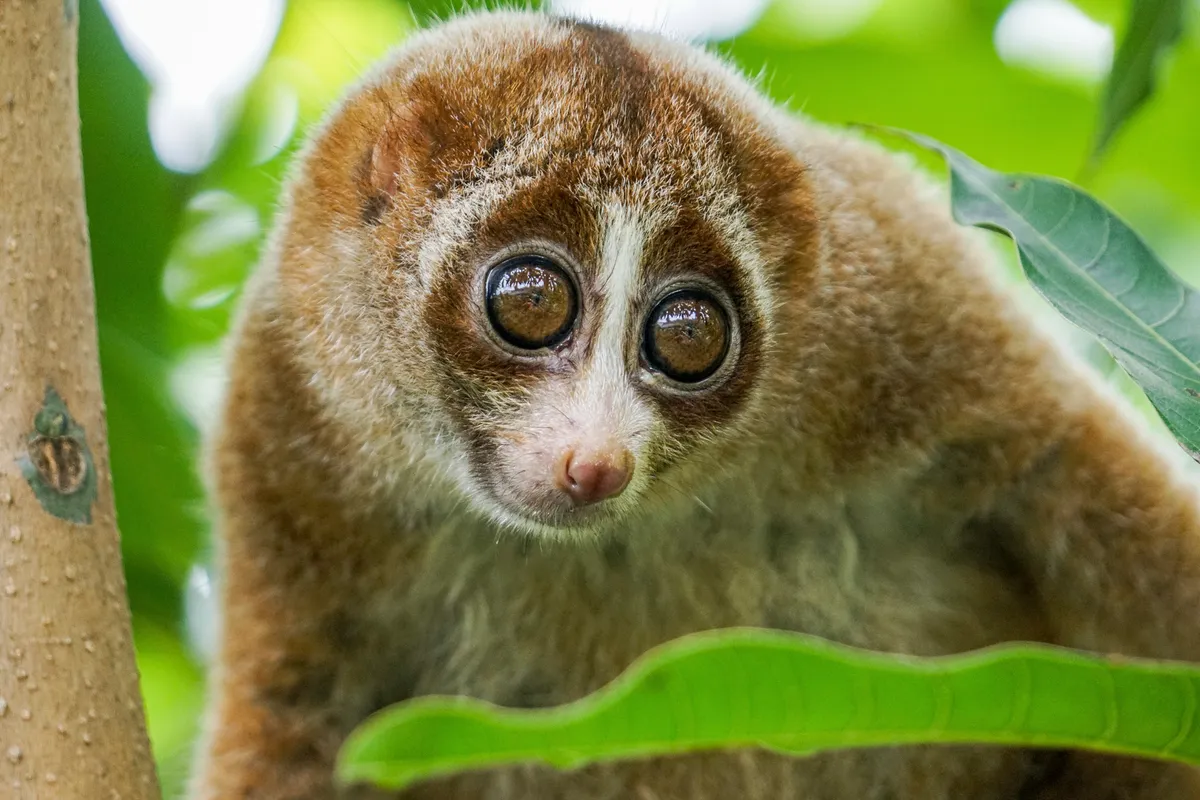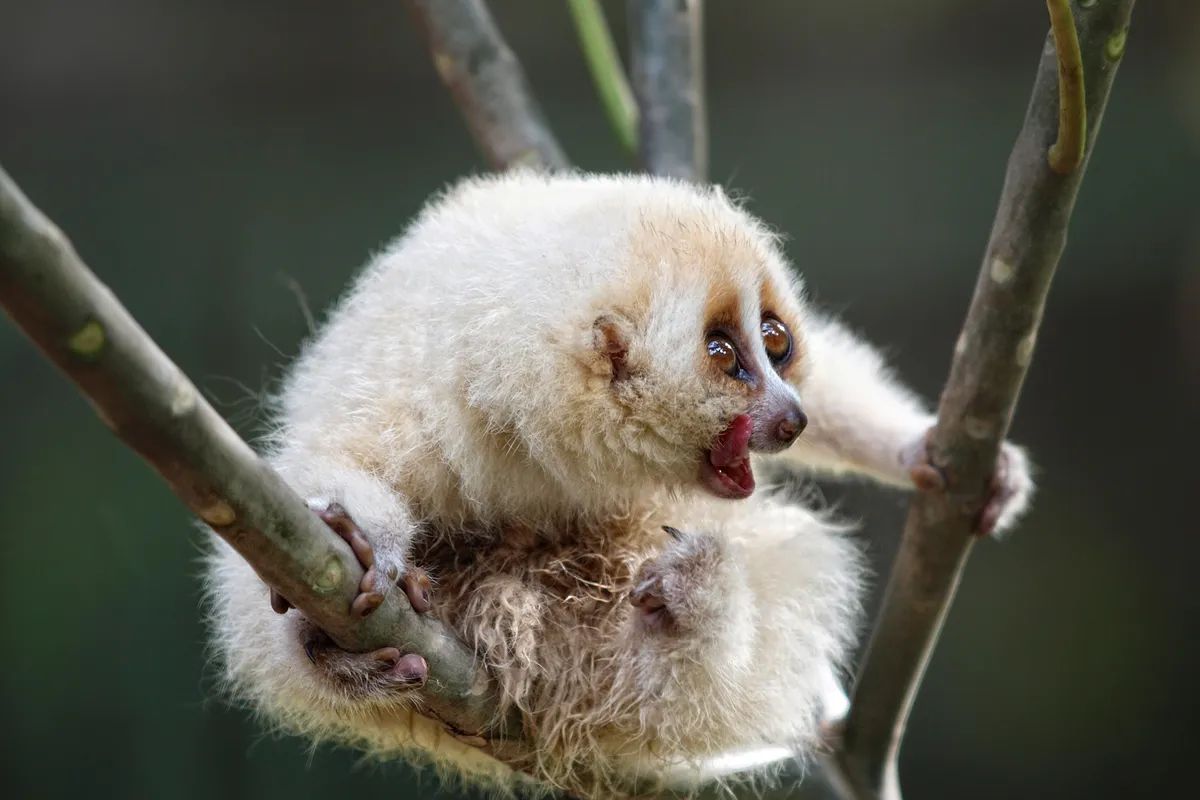Left alone, the slow loris is unhurried, foraging at night for fruit, nectar, insects and small mammals. Often known as the 'shy one', this gentle, but venomous, primate is facing a desperate struggle for survival.
What exactly is the slow loris? Are they really that deadly? Why are they in decline? And do they actually have supernatural powers?
If you want to read more about the animal kingdom, we've put together this list of weird animals to tickle your curiosity. Why not brush up on animal mathematicians as we talk to Brian Butterworth in our Instant Genius Podcast? And it's not just slow lorises that are rumoured to have magical powers, did you know that some animals glow in the dark?
What is a slow loris?
The slow loris is a contradiction. They may be cute, bijoux and big-eyed, but they are also toxic, fractious and potentially lethal. The world’s only venomous primate; these nocturnal furballs live in the rainforests of South and Southeast Asia.
At least eight species are known, including the Sunda slow loris, the pygmy slow loris and the Bengal slow loris. All species are currently in decline.
How slow is the slow loris?
The 18th Century explorers who first described them thought that they were sluggish and sloth-like, and so, the term ‘slow loris’ was born. It’s a bit unfair though.
Yes, they stay still for hours on end. Yes, they tend to move slowly, and yes, they freeze and hide behind their hands when they’re startled, but they can also shift when they need to, for instance, when catching a bug or dodging a predator.

Where do they live?
Slow lorises live in the trees, where they are superbly adapted to their surroundings. They have strong, grasping hands, flexible wrists and ankles, and a couple of extra vertebrae in the middle of their spine, which makes them supple and bendy.
Unlike many other tree-dwelling primates, which crash loudly through the forest, slow lorises are silent and slinky. They don’t jump; they move cautiously, hand over hand, and reach across the gaps between trees. They climb down when they need a poo.
Read more about animals:
- Here's looking at poo: the weird and wonderful species that look like faeces
- How much wood would a woodchuck chuck if a woodchuck could chuck wood?
- Inflating animals: 7 incredible creatures that blow up like balloons
What do they eat?
Slow lorises are omnivores. They guzzle small birds, insects, reptiles, fruit, gum and nectar. Their bottom front teeth are modified to form a structure called a toothcomb, which they use for grooming and gouging holes in tree trunks to get at the gum. A single animal can make more than a hundred holes in just one night.
They also have a long, narrow tongue, which helps them to reach the gum, as well as to retrieve nectar from flowers. They often hang upside-down by their feet so they can eat with both hands.
Wait a minute, why is that one licking its armpits?

Not exactly its armpits, but look closely, and you’ll see that the slow loris has a raised, bald patch on its inner, upper arm. This is called the brachial gland and it secretes a pungent, noxious oil.
When the slow loris feels threatened, it raises its arms and licks the gland. The saliva and oil mix, producing a venomous solution which is then drawn to the toothcomb’s tip by capillary action. When it bites another animal, the venom enters the victim’s bloodstream.
How bad is its bite?
Bad! The activated venom causes pain, swelling and a festering wound that takes ages to heal. It can kill small mammals and arthropods, and cause anaphylactic shock, heart irregularities and death in humans. Not so cute now, eh?!

What’s a nice loris like you doing with a deadly venom like that?
Good question! Although its venom can injure predators and kill small prey-sized animals, it seems the slow loris tends to save its toxic chomp for members of its own species.
In a recent study of 82 slow lorises in the wild, a third of the females and more than half of the males had horrendous bite wounds from other lorises. Males fight over females. Females fight to protect their offspring, and both sexes fight to defend their territory.
The venom is also used passively as a deterrent. Before they ‘park’ their babies in a tree and go off to forage, mothers lick their brachial glands and then groom their young so the venom is transferred to the babies’ fur. This is thought to deter potential predators, such as clouded leopards and sun bears.

What’s with the cute markings?
Slow lorises have dark teardrop-shaped markings around their big eyes, and stripes down their backs. Although this might look cute to us, it’s actually a warning signal.
Facial markings draw attention to the bitey, toxic mouth, whilst contrasting fur tones signal aggressiveness. This is known as aposematic colouration. It’s a ploy used by many animals, including skunks, poison frogs and ladybirds, to advertise that they are not worth attacking or eating.
The stripe, meanwhile, is a bit snake-like. So too is the venom, the super-bendy spine and the aggressive serpentine vocalisations that are made by the loris when it is threatened.
One theory is that these features evolved as a form of mimicry. Millions of years ago, there were both slow lorises and cobras in Southeast Asia, so the loris may have evolved snake-like features to confuse potential predators.
Why do slow lorises matter?
Like all living things, slow lorises play an important role within their ecosystem. They are prey for snakes, hawk-eagles and occasionally, orangutans, and they are predators of smaller beasts.
When they dine on nectar, they transfer pollen between flowers. When they eat and digest fruit, then poop out their seeds, they help to propagate the next generation of plants.
Where do they fit in the primate family tree?
Slow lorises belong to a primate group called the strepsirrhines, which also includes the lemurs of Madagascar, the bushbabies and pottos from Africa, and the slender lorises from India and Sri Lanka.
All members of the group have a wet nose called a rhinarium, a specialised sense organ for detecting pheromones, and a reflective layer inside their eyes that helps with night vision. They can also produce their own vitamin C.
Do slow lorises have supernatural powers?
Some people think so. Javan folklore says that if a drop of slow loris blood hits the ground, a landslide will follow, whilst if the placenta of a loris touches the ground, nothing will grow. In the Mondulkiri Province of Cambodia, hunters believe that lorises can heal their own broken bones, and that they have medicinal powers because they take multiple beatings to die.
Things become even more confusing when you consider that in North Sumatra, slow lorises are buried under houses and roads to bring good luck, and yet were used historically to curse enemies and bring bad luck. In Java, if a man drinks water that has been infused with the skull of a slow loris, it is said to make him more submissive, yet eating the meat of a slow loris is said to have aphrodisiac qualities.

What are the dangers to the survival of the slow loris?
They’re lovely-looking, so they’re sold for the pet trade, and they’re mysterious, so they’re sold for use in black magic and traditional medicine. In the process, they’re often physically ‘de-fanged’ and are illegally trafficked in the most appalling conditions.
They’re malnourished, stressed, and the mortality rate is up to 90 per cent. Meanwhile, back in the wild, their homes are being felled, and their habitat is shrinking. They are now amongst the rarest primates on earth.
What is their conservation status?
The slow loris species that were identified before 2012 are currently listed as either ‘Vulnerable’ or ‘Endangered’ by the International Union for Conservation of Nature. The three newest species have yet to be formally evaluated, but they are also thought to be in danger.

Five amazing facts about the slow loris
- In the late 19th-Century, some Borneans believed that slow lorises were the gatekeepers to the heavens, and that everybody had a slow loris waiting for them in the afterlife.
- Slow lorises have two tongues. The upper one is used for slurping nectar, whilst the lower one, called the sublingua, is used like a toothbrush to remove debris from the toothcomb.
- When it’s cold at night, pygmy slow lorises enter a hibernation-like state called torpor, where metabolism and body temperature are reduced. It can last for days.
- They have a special network of capillaries in their hands and feet, called the retia mirabilia, which helps them cling to branches for hours, without their digits going numb.
- In India, they are called the ‘bashful ones’, because they’re so difficult to spot. In Java, they are called ‘little firefaces’, because their eyes shine brightly in torchlight. ‘Loris’ is derived from the old Dutch ‘Loeris’ which means clown!
Discover more amazing animals: